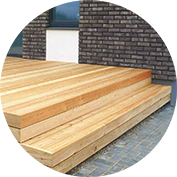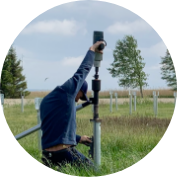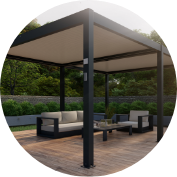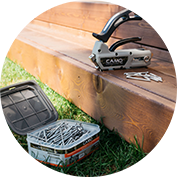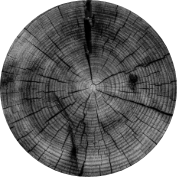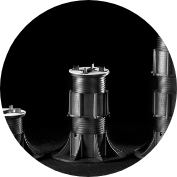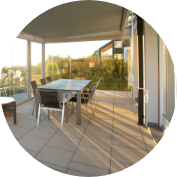Thermowood boards for terraces
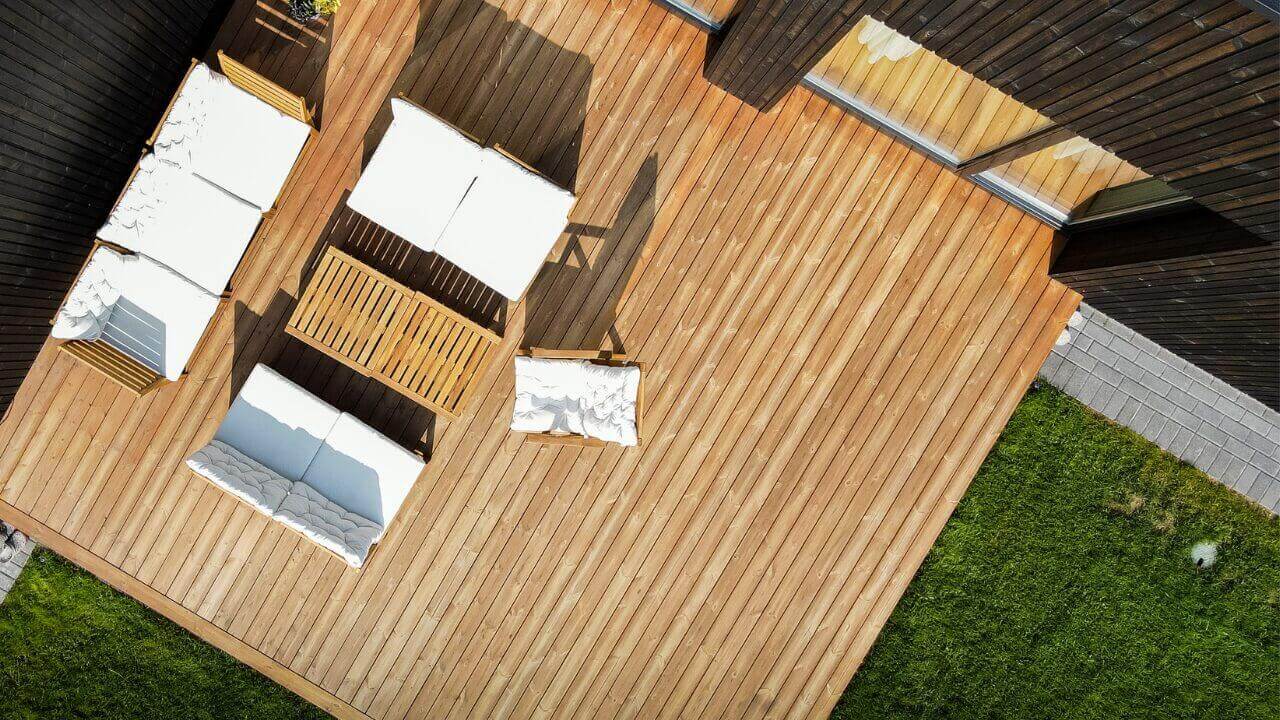
Thermal wood for terraces: why it’s the right material for your project
The construction of every terrace starts with the design and selection of the necessary components, which often depend on the architecture of the individual house, the overall colour scheme of the project, or the owners’ personal taste preferences. The materials used for the construction of a terrace are an important aspect in the realisation of a quality and comfortable terrace. Thermowood is one of the most popular materials recommended by many building professionals for the construction of terraces, with properties that appeal to the most demanding. This article discusses why thermowood boards are the most suitable choice for terrace construction.
Long-term environmental resistance
One of the main advantages of thermal wood for builders and designers is its long-term environmental resistance. Thermowood is made by heating and steam-treating natural wood species – usually spruce, pine or ash – and is therefore much more resistant to moisture and rot than untreated wood of the same species. This is particularly important as the terrace is subject to constant exposure to the weather. Thermowood is also much more resistant than untreated wood of the same species to pests such as mould, fungi and rodents. The treatment process is chemical-free, so the heat-treated wood is not harmful to people and the environment.
Thermal wood is divided into classes Termo S and Termo D according to the level of treatment and the intended use. Thermal wood of class Termo S is suitable for interior decoration of objects. And Termo D is for outdoor environments, which is why boards of this treatment class are used for terraces, fences, facades and balconies. Thermo D-grade timber boards are heated at temperatures above 200 degrees. The structure of hemicellulose is strongly modified by heat treatment. When moisture and nutrients are reduced, the wood becomes more resistant to fungi and rodents, to walking, and lasts longer than non-heat-treated woods.
Thermomodification technology
The heat treatment first raises the temperature of the wood above 215 °C and then returns it to normal temperature. The treatment takes between 1.5 and 3 days (depending on the raw material, moisture content, dimensions and the intended use of the wood) and is regulated using hot air and steam. The structure of the wood changes, removing water and extracts such as resin (terpenes). The heat treatment process changes the structure of the wood and increases its resistance to external influences. The reaction to changes in humidity in the environment is reduced, regardless of changing weather conditions, and the shape of the thermoplastic board remains stable. The main effects of heat treatment on pine wood are: dimensional stability, durability and colour darkening, which depends on the temperature during the treatment process – the higher the temperature, the darker the colour.
The most stable wood structure
Thermal wood has a stable structure which reduces its susceptibility to cracking, warping or shrinkage. This property becomes particularly important for terrace structures, especially if we are dealing with large temperature fluctuations or intense sun exposure. Thermal wood decking boards become extremely stable, durable, have excellent thermal insulation properties and keep their newness longer. Studies have shown that heat-treated pine wood has a thermal conductivity of 20-25%. lower than that of untreated pine wood.
The stability of thermowool is not only beneficial to the owners of the properties, but also to the installers of the terraces. MDS Terasos, a company with many years of experience in the terraces sector, emphasises the value of the stability of thermowool from the craftsman’s perspective. It is important to the company’s specialists that customers do not call them a year later because of broken bolts, which is not the case with thermoplastics. This building material is extremely stable, aesthetic and easy to work with, it is easy for craftsmen to work with and it is durable!
Beautiful appearance and operational advantages
The attractiveness of thermo-wood boards is also reflected in their aesthetics and sensory characteristics: natural smell, pleasant tactile feel and acoustic properties. These advantages of thermowood boards offer the potential to increase comfort in construction projects.
Heat-treated pine planks are extremely soft and smooth, and are the most barefoot-friendly. The fact that these boards are not scuffed and do not contain grit is a major advantage for terrace owners with children and pets.
Thermal wood retains the beauty of natural wood (colour irregularities affected by branches and bark), its warm colour and smell, giving your terrace a pleasant, aesthetic appearance. In order to keep the original colour of the thermowood boards as natural as possible, it is recommended to oil the boards. The surface of the boards can be coated with Woca exterior oil with pigment in a choice of 13 colours.
When exposed to sunlight, thermowool naturally greys over the years, taking on a greyish silver hue that blends in with elements of the natural environment such as sand or stones. Sometimes terrace owners prefer this type of decking because it blends in perfectly with the overall design of the house, allowing the shade of the decking to change organically with the weather. In this case, it is still recommended to renew the terrace boards annually (depending on the operating conditions and the direction of the terrace) by oiling them with colourless oil.
Easy installation and maintenance
Thermal wood boards for terraces are lightweight and have stable dimensions. This facilitates their installation and reduces construction time, allowing the project to be completed quickly and efficiently. It is recommended to install thermopanels on terraces using helical foundations, CAMO invisible fixing system and Protech screws.
Maintenance of thermoplastic boards is also simple: thermoplastic wood does not need special attention or special chemicals to maintain it – just regular oiling.
Greening
Often, thermowool is obtained from an organic source. This is important in order to choose an environmentally friendly material.
MDS Terasos, representing its partner Finnish company HJT, supplies the Lithuanian market with sustainable Scandinavian thermowool, certified with the Finotrol-PEFC-COC-1505 certificate PEFC ST 2002:2013. HJT specialises in the production and further processing of heat-treated timber to meet the needs of consumers and to comply with the principles of financially, environmentally and socially sustainable forestry. HJT is one of the oldest and most experienced manufacturers of thermal media in Europe.
Thermowood boards for terraces are the perfect choice for terrace construction due to their strength, stability, durability, aesthetic design and environmental friendliness. Heat-treated boards are much less likely to split and fray than other types of boards popular in this country. If you are planning a terrace project, thermoplastic timber could be the most suitable choice of building material.


